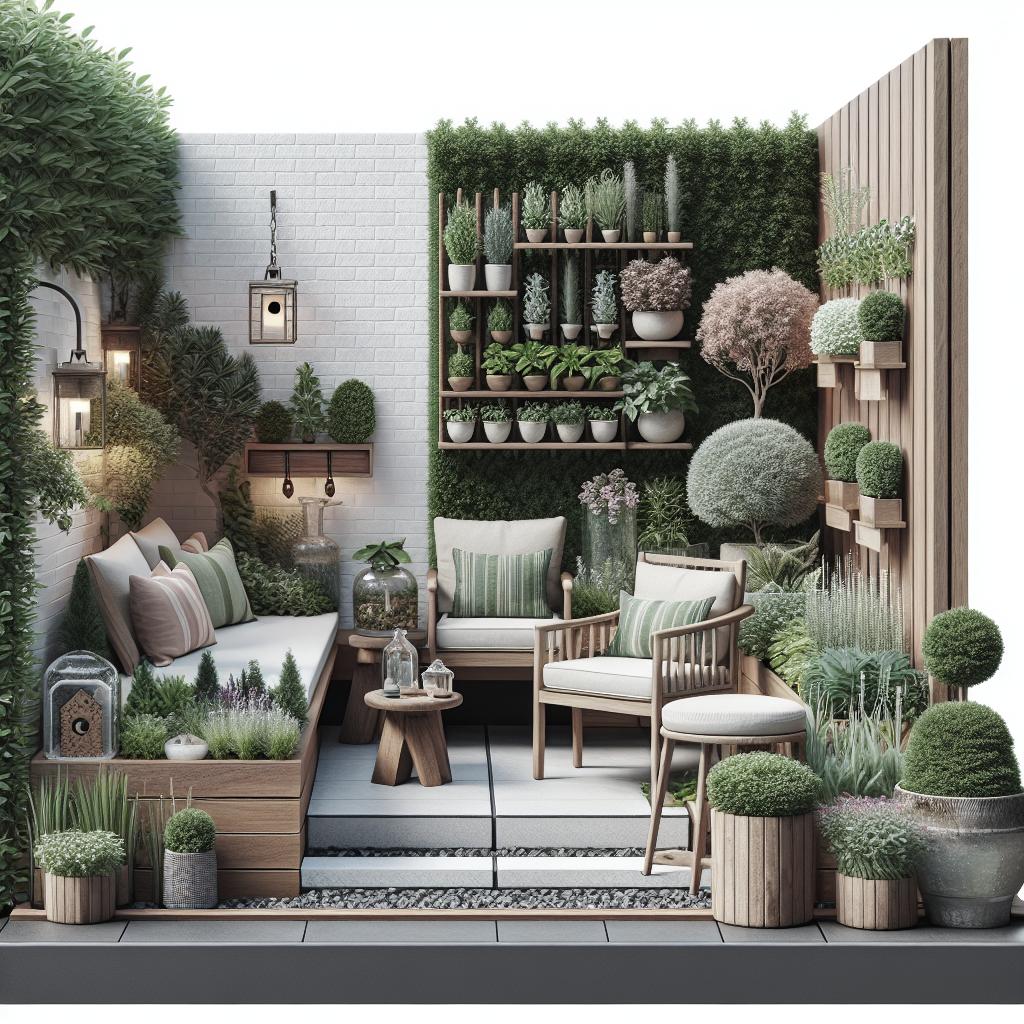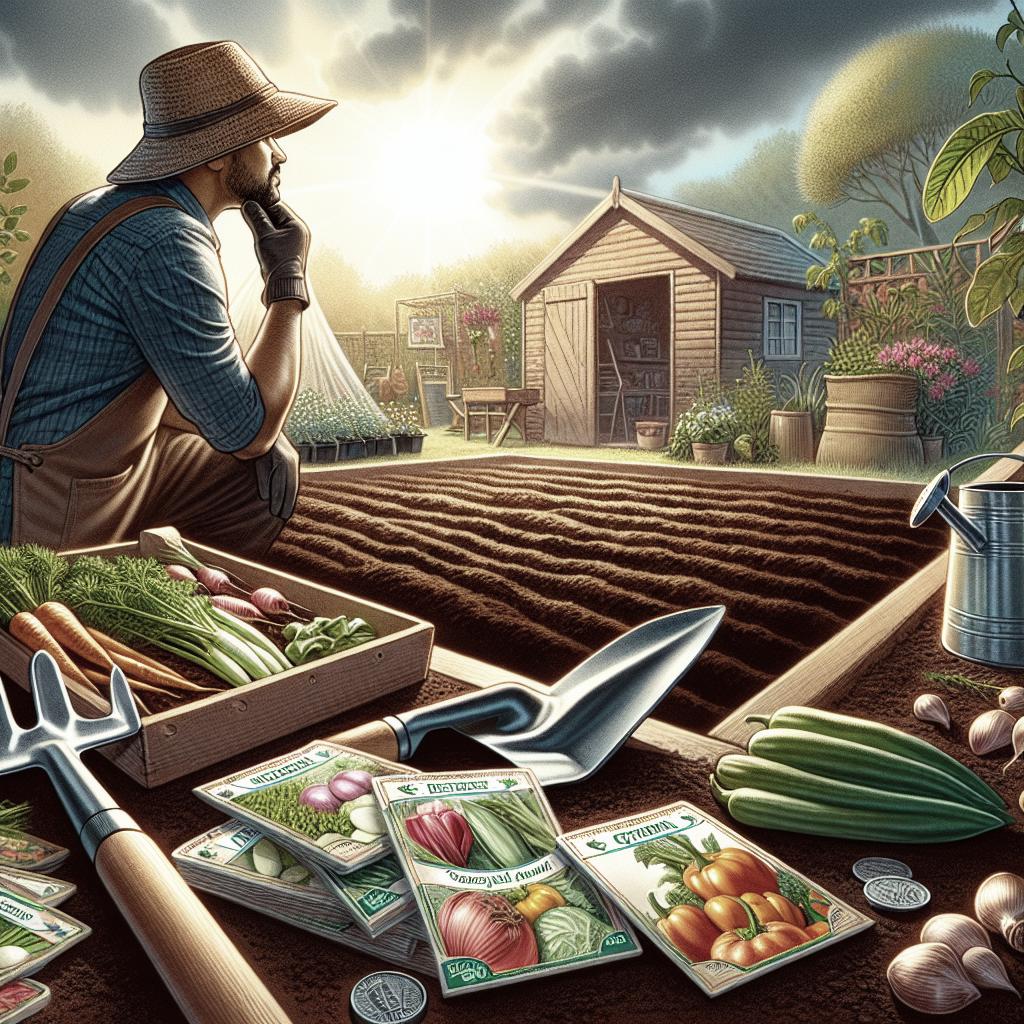“`html
Landscaping Ideas for Small Spaces
Small outdoor spaces, whether a petite patio, compact backyard or urban balcony, have their unique charm and challenges. Maximizing these areas requires creativity and clever design strategies. This blog post explores innovative landscaping ideas to transform your small patch of greenery into a beautiful oasis. By incorporating elements such as cozy seating, effective use of colors, and strategic planting, you can create an inviting space that feels much larger than its square footage. Discover how to use height, zones, foliage, and focal points to enhance your outdoor environment. Let these tips inspire you to make your small space a highly functional and visually stunning retreat.
Create a View
In small spaces, creating a view is essential to draw the eye and expand the perceived boundaries of your area. This can be achieved by strategically placing plants, structures, or decorative elements that lead the eye to a distance or focal point. Incorporating mirrors or reflective surfaces can also give the illusion of greater depth, doubling the appeal of your limited space.
Another technique is to use layering within your landscape. This involves planting in layers from shortest to tallest, with the tallest elements guiding the eye upwards or towards a particular scene. With thoughtful placement, even the smallest garden can offer a dynamic visual experience, drawing attention to the most captivating parts of your outdoor space.
Create Small Backyard Zones
Dividing your small backyard into distinct zones can help maximize functionality and enjoyment. You can create separate areas for dining, lounging, gardening, or playing by using furniture, planters, or differing ground materials. Clearly defined zones help make a small space feel larger and provide a sense of privacy and intimacy.
Use elements like trellises, planters, or creative lighting to demarcate zones without relying on walls or fences. Creating subtle divisions allows fluid transitions from one area to another and maintains openness. The key is to balance distinct functions within a cohesive overall look.
Make It Cozy
Small spaces have the advantage of naturally feeling cozy, and embracing this quality can enhance the comfort of your landscape. Consider adding plush outdoor cushions, warm lighting, and textured throws to foster a welcoming environment. These elements invite relaxation and leisure, making the most of every inch.
Incorporating natural materials such as wood, stone, or greenery into your seating and decor can also contribute to a cozy aesthetic. These materials add warmth and an organic feel, cultivating an atmosphere that’s both comforting and sophisticated, perfect for unwinding alone or hosting an intimate gathering.
Add Color Effectively
Color can play a transformative role in small landscapes, affecting mood and perception. Use a restrained palette to avoid overwhelming the space, while strategic pops of vibrant color can draw interest and create focal points. Consider the surrounding environment and select colors that complement or contrast effectively.
Beyond flowers, think about incorporating colorful pots, cushions, or painted decor to bring life to your space. These elements can be easily swapped out with the seasons or trends, allowing for a dynamic yet harmonious landscape throughout the year.
Use the Power of Perspective
Perspective can significantly alter how a small space is perceived. By guiding the viewer’s gaze with strategically placed lines or paths, you can make your yard appear larger. Direct pathways or rows of plants can lead the eye toward a focal point, drawing interest and creating a journey through the landscape.
Another technique is to use diagonal layouts for patios or plant rows, which elongates the appearance of the space. This simple trick can deceive the eye, maximizing every inch and enhancing visual interest, allowing your small garden to make a big impression.
Boost the Intrigue
Adding elements of surprise or mystery can make your small garden intriguing and memorable. Consider including hidden features, such as a secluded nook, art piece, or unexpected plant variety, that will invite visitors to explore and engage with your garden.
Using varying textures and levels can also add depth and complexity. Combining different surfaces, such as gravel paths, grass patches, and planted borders, stimulates interest and invites exploration. This blend creates a charming environment that intrigues and delights.
Create Unique Small-Space Vertical Features
In small gardens, making the most of vertical space is essential. Trellises, living walls, or vertical planters can add height and visual interest while preserving ground space. These features allow you to introduce more plant varieties and even grow herbs or vegetables.
Vertical elements not only maximize space but also create stunning backdrops and screens that help define zones. When coupled with climbing plants or hanging baskets, they contribute to a lush and immersive garden environment that feels enveloping and intimate.
Borrow Views for Your Small Backyard
Borrowed views involve incorporating the scenery beyond your garden into your design to create a sense of continuity and openness. Strategically placed plants or trellises can frame an attractive distant view, drawing attention outward and extending your space’s boundaries.
Alternatively, reflect views from your garden into the space with mirrors or reflective surfaces. This technique can emphasize certain plants or structures in your landscape while also capturing fleeting vistas, such as a beautiful sunset.
Make Your Small Backyard a Destination
Transform your small backyard into a destination by creating a feature or area that draws people in. This could be a cozy seating nook, a unique fire pit, or an intriguing water feature. By focusing on a single standout element, you provide a focal point that adds character and purpose.
Further enhance this destination feel by integrating complementary elements like lighting, cushions, or a shade structure. These additions help cultivate an inviting and functional gathering spot that becomes a natural extension of your home.
Take Advantage of Foliage and Texture
Plants with interesting foliage and texture can dramatically impact the aesthetic of your garden. Mixing different leaf shapes, sizes, and colors creates visual interest and depth, especially important in smaller spaces where variety is essential.
Textured plants, such as grasses or succulents, add complexity and can be used to complement features like pathways or water elements. This varied plant palette keeps your garden exciting and visually dynamic throughout the seasons.
Keep Plants Vertical
Embracing vertical planting in your small backyard can yield stunning results. Use climbing plants or espaliered trees to add greenery without occupying valuable ground space. These vertical features enhance privacy, add color, and soften architectural lines.
In addition to trellising or wall-mounted planters, consider implementing vertical garden walls, which allow you to grow a range of plants and flowers, even in limited space. These living installations can be as simple or elaborate as you desire, providing endless opportunities for creativity.
Create a Small Backyard Focal Point
A focal point in your garden draws attention and grounds the surrounding space. It could be an artistic sculpture, a stunning plant, or a seating area with distinct furniture. Focal points add structure and guide the viewer’s journey through the garden.
When establishing a focal point, consider scale, location, and balance with the rest of your landscape. A well-placed focal point creates harmony and enhances the overall aesthetics of your outdoor space.
Conquer Dead Landscape Spots
Addressing dead or underutilized spots in your garden can transform your space into a cohesive oasis. Identify these areas and introduce vibrant planters, decorative stones, or water features to breathe life into them.
Additionally, consider functionality when revamping these zones. Add seating, lighting, or shade, transforming previously neglected parts of the garden into key areas of interest and activity.
Skip the Lawn
In small yards, maintaining a lawn may not be the most practical use of space. Instead, consider alternatives such as ground-cover plants, gravel, or decked surfaces. These options reduce maintenance while offering functional and aesthetic benefits.
Gravel or decking can serve as the foundation for seating or dining areas, creating open, versatile spaces. Alternatively, ground-cover plants provide lush greenery without requiring the care demands of traditional lawns.
Raise Planting Areas
Elevating planting areas with raised beds or containers adds dimension to your landscape, making the most of your vertical space. Raised beds are ideal for growing vegetables or flowers and offer improved drainage and soil quality control.
This approach enables better visibility of plants and allows for creative layout arrangements. By interspersing these features throughout your garden, you create layered scenery that draws the eye and enhances the visual appeal of your outdoor area.
Streamline a Small Backyard
Streamlining your garden design involves removing clutter and embracing simplicity. Focus on essential elements that add to the space’s function and aesthetics, and eliminate excess items that may overwhelm a small area.
A minimalist approach enables more efficient use of space and enhances the overall ambiance. By choosing fewer, high-quality pieces that integrate seamlessly with your landscape, you create a unified, relaxing environment.
Ideas for Small Outdoor Spaces with Style
Styling your small outdoor space is about creatively using elements to reflect your taste and personality. Consider integrating stylish outdoor furniture, unique lighting, and eclectic decor to make the space distinctly yours.
Experiment with different textures and materials to create layers and depth. Incorporating personal touches such as artisanal pots or bespoke sculptures can further enhance the ambiance and bring your outdoor vision to life.
Final Thoughts
| Strategy | Key Elements |
|---|---|
| Create a View | Using mirrors, strategic plant placement, layering |
| Create Small Backyard Zones | Define areas with planters, differing surfaces |
| Make It Cozy | Plush seating, natural materials, warm lighting |
| Add Color Effectively | Vibrant accents, color-coordinated decor |
| Use the Power of Perspective | Direct paths, diagonal layouts |
| Boost the Intrigue | Hidden features, varied textures and levels |
| Create Unique Small-Space Vertical Features | Living walls, trellises, vertical planters |
| Borrow Views for Your Small Backyard | Frame distant views, reflective surfaces |
| Make Your Small Backyard a Destination | Feature elements, cohesive enhancements |
| Take Advantage of Foliage and Texture | Mix leaf shapes, textured plants |
| Keep Plants Vertical | Climbing plants, garden walls |
| Create a Small Backyard Focal Point | Sculpture, striking plant, central seating |
| Conquer Dead Landscape Spots | Planters, decor elements, functional redesign |
| Skip the Lawn | Ground-cover plants, gravel, decking |
| Raise Planting Areas | Raised beds, containers, tiered design |
| Streamline a Small Backyard | Simplified design, focus on essentials |
| Ideas for Small Outdoor Spaces with Style | Stylish furniture, personal touches |
“`

